The European landscape is dotted with an array of culinary experiences that have, for centuries, shaped the way locals begin their mornings. One such experience is the continental hot breakfast, which has undoubtedly stood the test of time. With the advent of globalisation in the coffee industry, Starbucks has made significant strides in entering the European market, whilst ensuring that the unique regional preferences and flavours are seamlessly woven into their offerings. As we delve into the intricacies of Starbucks’ European journey, store experiences, and their hot breakfast offerings, we are able to gain insights into how this American coffee giant has managed to capture the hearts of Europeans one cup at a time.
History of Starbucks in Europe
The story of Starbucks in Europe began in 1998 when the coffee giant opened its first store on the continent in London. Despite its success in the US and a belief that the brand would be similarly received overseas, Starbucks encountered some unique challenges in the European market. Many European countries, such as Italy and France, already had a deep-rooted coffee culture and a plethora of established independent coffee shops which offered stiff competition to the American import. As Starbucks continued to expand in Europe, it quickly recognized that it needed to adapt to local tastes and preferences in order to be successful.
One important way Starbucks tailored its European offering was in its approach to food, particularly breakfast items. Europeans, especially those in the UK, have a strong tradition of enjoying hot breakfasts that include items such as eggs, bacon, sausage, and baked beans. Realizing this, Starbucks set out to develop a range of European hot breakfast options to appeal to local tastes, in addition to its existing American classics. This resulted in menu additions like the UK-exclusive All-Day Breakfast Roll, featuring a combination of sausage, bacon, and scrambled egg in a soft, crusty roll.
Similarly, in other European countries, Starbucks adjusted its menu to better cater to local preferences. For instance, in France, Starbucks offers a selection of breakfast sandwiches featuring traditional French ingredients such as brie and ham or emmental and turkey, allowing French customers to enjoy a taste of their country’s cuisine while still experiencing the Starbucks brand. By adapting its food offerings, Starbucks was able to demonstrate its respect for European culture, understanding the importance of embracing local culinary traditions in gaining customer loyalty.
This localization strategy extended beyond just food to include the store design as well. Starbucks understood that in order to appeal to European clientele, they could not simply replicate their American store model. Instead, they adapted the design and atmosphere of their European locations to reflect local architectural styles and sensibilities, creating a more seamless integration into the urban landscape of European cities.
In conclusion, Starbucks’ European journey highlights the significance of acknowledging and accommodating local preferences and cultural aspects in the quest for international success. By adapting their food offerings, specifically European hot breakfast options, Starbucks has shown a commitment to becoming an integrated part of the communities they serve. In doing so, they have successfully carved out a unique niche for themselves in the highly competitive European coffee market.
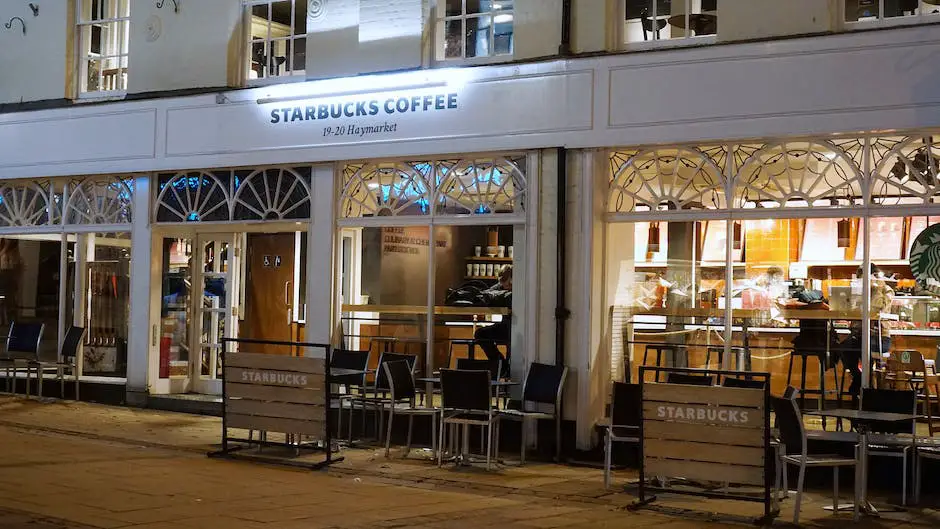
Starbucks European Store Experience
A key distinction between Starbucks branches in North America and Europe can be found in the store design and ambiance, particularly in relation to the European hot breakfast offerings. European Starbucks stores place a strong emphasis on local cultural influences, resulting in a more unique and bespoke experience for customers. This is evident in the architectural details of certain shops, such as those in historically rich cities like Paris and Rome, where historic buildings are transformed into elegant cafés. Consequently, the Starbucks experience in Europe is often more immersive in terms of architecture and design, compared to their North American counterparts.
Communal seating is another aspect that varies between Starbucks stores in North America and Europe. In many European cities, Starbucks outlets offer more communal seating options to encourage social interaction among customers. This is both shaped by and reflective of the culture in Europe, where people are more likely to engage with others in public spaces. Sharing a table over a European hot breakfast at Starbucks becomes an experience of community-building and cultural exchange for locals and tourists alike.
The Starbucks European hot breakfast menu is also tailored to cater to the local tastes and preferences of the region. On offer are items such as the British classic, Bacon Butty, in the UK, or the Croissant Jambon Fromage in France, which showcase influences from traditional European breakfast dishes. Starbucks ensures their menu includes options that are specific to each country, integrating familiar flavours and ingredients to create appealing and satisfying meals for customers in different parts of Europe.
Local cultural influences extend beyond the food itself, influencing even the ingredients used in Starbucks outlets in Europe. For example, European outlets are more likely to use locally sourced products to create their dishes. This not only helps in reducing the carbon footprint but also adds an authentic touch to the European hot breakfast experience, with patrons enjoying fresher and high-quality ingredients. This emphasis on quality and locality further distinguishes the European Starbucks experience from that of North America, where such a focus may not be as paramount.
Aside from the architectural and cultural influences, the Starbucks European store experience differs significantly from that in North America, particularly in terms of service and customer interaction. This is notably apparent when ordering hot breakfast items, as European staff members are more likely to engage with customers by providing recommendations and discussing details about the dishes and their ingredients. This degree of personal connection and attentiveness, combined with the unique design elements and localised menu selections, ultimately ensures that the Starbucks experience in Europe remains distinctive and unforgettable.
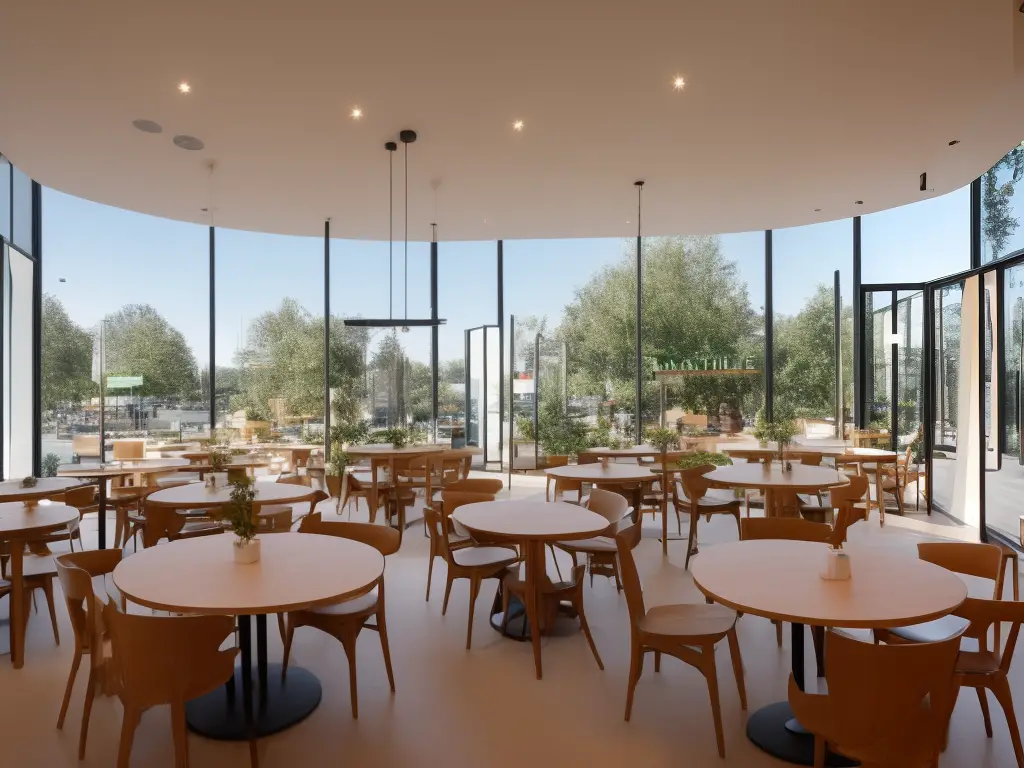
European Hot Breakfast Offerings
Upon visiting a European Starbucks, one can enjoy a delightful variety of hot breakfast offerings tailored to suit regional tastes and preferences. In addition to the classic American-style Starbucks menu items, the European outlets offer an enticing selection of locally-inspired delicacies. Ranging from hearty toasts to delectable sandwiches, one can begin their day with an authentic European hot breakfast, ensuring a delicious and satisfying meal experience.
For instance, Starbucks in the United Kingdom offers Toasted Focaccia, a sumptuous and convenient option to enjoy on the go. This Italian-inspired offering is prepared with freshly baked focaccia bread and filled with various ingredients, such as melted mozzarella cheese, sun-dried tomatoes, and fresh basil. Similarly, Starbucks Spain prides itself on offering hot sandwiches like the Jamón Serrano y Queso Manchego, featuring Spain’s famous cured ham paired with traditional Manchego cheese.
Pastries are a much-loved breakfast staple throughout Europe, and Starbucks does not disappoint in this regard. The Croissant Jambon Fromage – a warm, flaky croissant filled with ham and cheese – is a popular item in Starbucks locations in France and Belgium. Similarly, Starbucks Germany offers Laugenbrötchen, a traditional German pretzel bread roll filled with classic toppings such as cheese, ham, and mustard, providing a taste of local flavour.
Customers can also find European regional favorites on Starbucks breakfast menus. One such example can be found in the Netherlands, where the Broodje Gezond – a Dutch sandwich with ham, cheese, lettuce, tomato, and cucumber – is a nutritious and delicious option. Meanwhile, Starbucks Italy embraces its culinary heritage with the Tramezzino Classico, a triangular sandwich filled with prosciutto crudo, mozzarella, and artichoke, offering customers an authentic taste of Italy.
European Starbucks stores offer a diverse range of hot breakfast options catering to varying taste preferences. With choices inspired by various countries and cultures, customers can enjoy a unique and flavoursome morning meal, ensuring a delightful start to their day. European Starbucks breakfast menus expertly combine the signature Starbucks experience with regional preferences and culinary traditions.
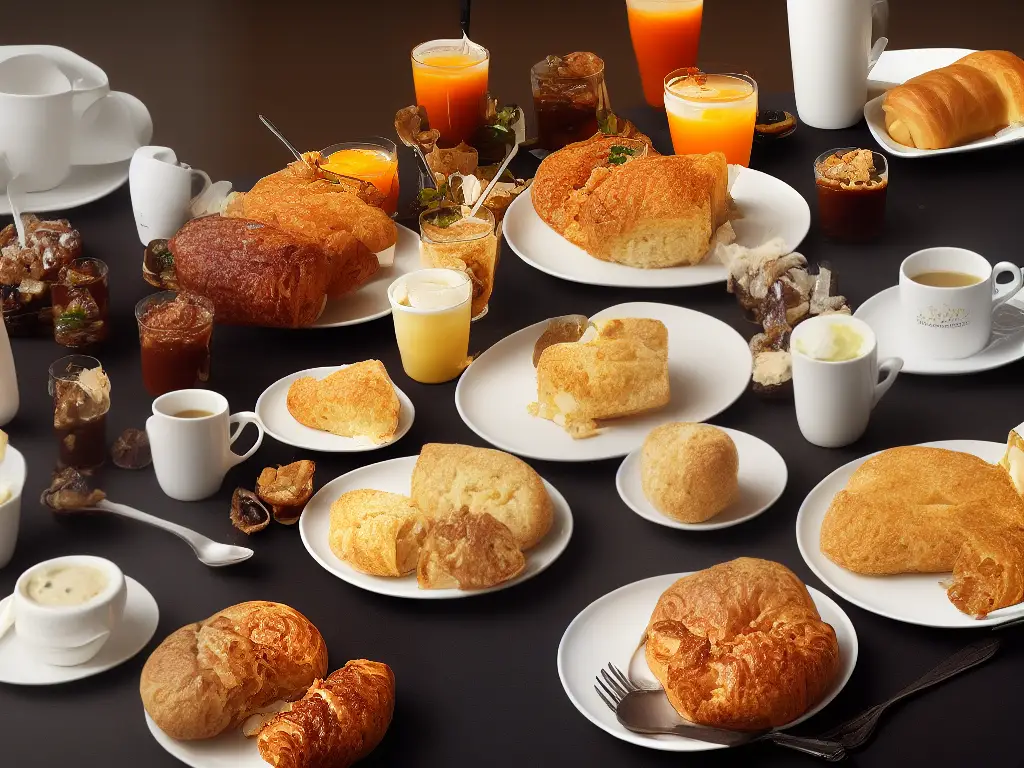
Ingredients and Nutritional Information
A popular hot breakfast item at Starbucks Europe is the Hot Breakfast Sandwich. This appetising sandwich typically features British pork sausage, crispy smoked bacon, free-range scrambled eggs, and a slice of mature cheddar cheese, all nestled within a fluffy, toasted white roll. These ingredients harmoniously create a well-rounded flavour profile. The pork sausage offers a savoury foundation, complemented by the subtle hint of smokiness from the smoked bacon. The free-range scrambled eggs contribute a creamy texture, and the mature cheddar cheese introduces a sharp, cheesy tang.
In addition to these ingredients, Starbucks also offers a variety of plant-based options for those following vegetarian or vegan diets. One such option is the Vegan Nut Roast, which is a hearty and warming dish packed with lentils, vegetables, and a mix of seeds, perfect for colder mornings. Another vegan sandwich option available in some European locations is the Vegan Chick’n & BBQ Sauce Panini, which features a plant-based chicken alternative, vegetable slaw, and tangy BBQ sauce.
Starbucks is also committed to providing nutritional information and transparency for their customers, so they can make informed choices about their food and beverage purchases. Nutritional information for their hot breakfast items can be found on their website or on the packaging, and typically includes details about calories, fat, carbohydrates, protein, sugar, and salt. This helps customers to manage their daily intake and make choices that suit their individual preferences or dietary needs.
Allergens are another crucial aspect of the ingredients used in Starbucks hot breakfast items. Information about potential allergens, such as gluten, nuts, dairy, or eggs, is available on Starbucks’
website and boldly indicated on the packaging. This allows customers with specific dietary restrictions or allergies to make informed choices and avoid potentially harmful ingredients.
Starbucks’ European hot breakfast dishes cater to a wide range of tastes and dietary requirements, from the indulgent Hot Breakfast Sandwich to the nutritious Vegan Nut Roast. By providing detailed nutritional information, allergen warnings, and a variety of delicious flavour profiles, Starbucks ensures that their customers can fuel up in the morning with a scrumptious and satisfying meal that suits their individual preferences and needs.
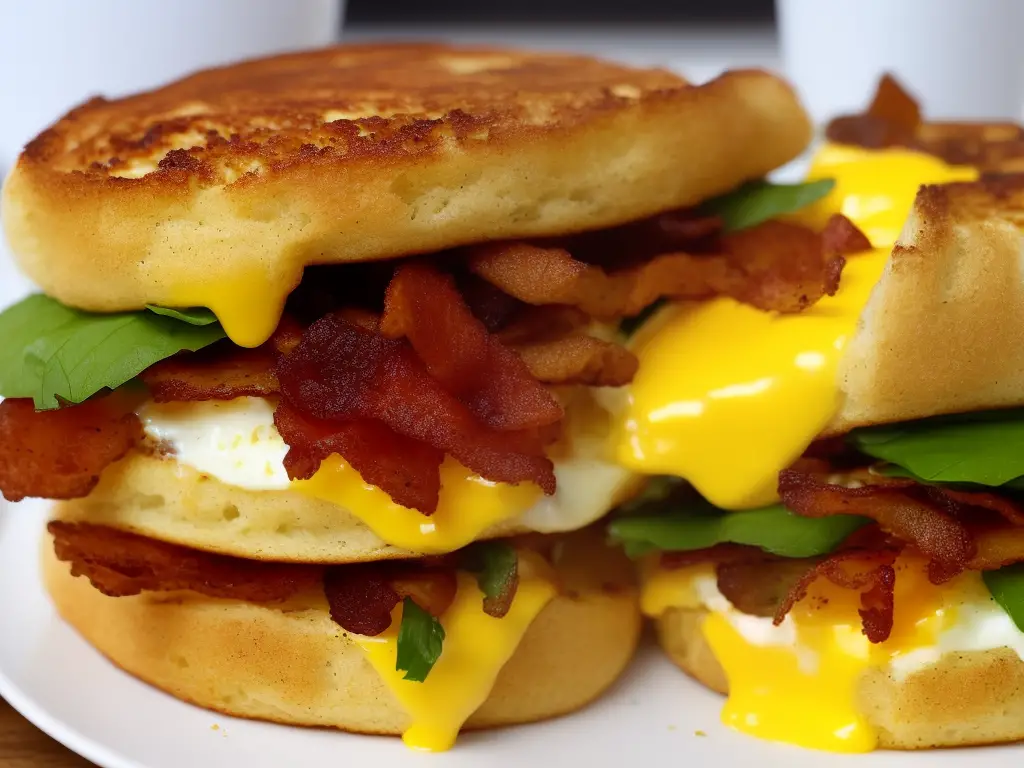
Coffee and Beverage Pairings
One of the most delightful aspects of enjoying a European hot breakfast at Starbucks is finding the perfect coffee or beverage pairing to complement the flavours of your meal. Depending on one’s palate and preferences, certain coffee blends, tea options, and seasonal speciality drinks can enhance the experience of savouring items such as buttery croissants, generously filled sandwiches, and warm breakfast rolls.
Coffee Blends
Starbucks boasts a wide selection of coffee blends that can be paired with an array of European hot breakfast dishes. For example, the Starbucks Blonde Roast is a mellow, light-bodied blend with subtle citrus notes that beautifully cut through the richness of a buttery croissant, or complement a ham and cheese panini. Alternatively, for those who prefer bolder coffee flavours, the Starbucks Dark Roast lends a more robust and intense taste that can stand up to heartier dishes such as a sausage breakfast roll or a bacon and egg sandwich.
Tea Options
For those partial to tea, Starbucks offers many options that can also pair seamlessly with European hot breakfast items. A fruity or herbal tea, such as the Teavana Peach Tranquility or Mint Majesty, can invigorate the palate and create a harmonious contrast against the warmth and savouriness of a hot breakfast. Fans of classic tea blends can also indulge in an Earl Grey or English Breakfast tea, both of which have enough body and complexity to stand up to the hearty flavours of a warm breakfast roll or sandwich.
Seasonal Specialty Drinks
Furthermore, seasonal specialty drinks present an exciting way to elevate a European hot breakfast at Starbucks. Cooler months may call for a spiced Pumpkin Spice Latte or a decadent Salted Caramel Hot Chocolate, both of which lend a festive, comforting depth to dishes like buttery pastries and breakfast sandwiches. Warmer seasons may invite a cool iced coffee or a refreshing iced tea, like the Mango Black Tea Lemonade, to provide a revitalising contrast to a hot breakfast’s warm and indulgent flavours.
Alternative Options
Aside from their extensive selection of traditional coffee and tea beverages, Starbucks takes pride in offering alternative options for those who desire a different choice to complement their European hot breakfast. Dairy-free and vegan options, such as almond, coconut, or oat milk, can be used in most of their drinks, allowing every guest to find the perfect beverage pairing to enhance their Starbucks breakfast experience. In essence, the vast range of coffee blends, tea options, and specialty drinks available at Starbucks ensures that everyone can enjoy and discover their ideal coffee and beverage pairings for a memorable and flavourful dining experience.

Consumer Preferences and Trends
A noteworthy trend in European consumer preferences for hot breakfast items at Starbucks is the growing demand for healthier options. With increasing awareness around the importance of a nutritious morning meal, many customers are opting for choices that offer a balance of proteins, fibre, and essential vitamins. As a result, Starbucks has made efforts to diversify their hot breakfast menu by introducing items like porridge bowls, egg white frittatas, and whole-grain sandwiches. These options embody customers’ desire to make smarter decisions regarding their breakfasts, without compromising on taste or satisfaction.
Convenience is another significant factor impacting European consumers’ choices for hot breakfast items at Starbucks. As busy morning routines leave little time for leisurely sit-down meals, customers are looking for options that are easy to eat on-the-go. Starbucks has tapped into this trend by offering handheld hot breakfast items, like breakfast wraps or sandwiches that can be enjoyed in a rush. Additionally, their app-based and contactless ordering systems further speak to the need for efficiency and ease during the morning commute, ensuring that their customers can grab a delicious hot breakfast without wasting precious time.
Seasonality also plays a crucial role in shaping the preferences of European customers for Starbucks hot breakfast items. As weather patterns shift, so too do consumer tastes: lighter, fresher options like fruit salads and granola pots may be popular during the warmer months, while heartier choices like savoury porridges or toasted breakfast sandwiches might be sought-after when the temperatures drop. To cater to these changing preferences, Starbucks routinely refreshes its menu and offers limited-time items that make the most of local, seasonal ingredients. This not only helps to reduce food miles and supports regional producers, but it also ensures that customers have access to a diverse range of flavours throughout the year.
Alongside these trends, there is also a growing interest in plant-based and vegetarian options among European consumers. A substantial proportion of the population is now following either a vegetarian or flexitarian diet, thus driving the demand for hot breakfast items that are free from animal products. Starbucks has responded to this shift by introducing items such as vegan bean and tofu burritos or vegan all-day breakfast pots, which appeal to customers seeking plant-based alternatives to traditional breakfast fare.
It’s important to note that preferences for Starbucks hot breakfast items among European consumers are heavily influenced by local culinary traditions. Each region has its unique breakfast culture, often involving a hot meal in the morning. As such, Starbucks takes great care to consider the tastes and habits of its customers in each market, often incorporating regional favourites into the breakfast menu. This approach ensures that patrons can still enjoy a familiar, comforting meal while experiencing the convenience and innovation that Starbucks consistently offers.

Competitors and Market Analysis
In the European market, Starbucks faces strong competition from both local and international chains when it comes to hot breakfast offerings. One of the main competitors in the UK is Pret A Manger, which boasts an extensive range of hot breakfast items, such as porridges, breakfast pots and wraps. In mainland Europe, Starbucks finds competition in regional chains like Nero and Costa Coffee, as well as numerous local bakeries and cafes offering traditional breakfast fare. These competitors often have deeply ingrained customer loyalty and familiarity with local food preferences, which can indeed challenge the success of Starbucks’ hot breakfast offerings.
Despite the competitive landscape, Starbucks has been able to carve out a niche for itself with unique offerings such as their Egg Bites and vegan options like the Beyond Meat breakfast sandwich. This focus on innovation and adapting to changing consumer preferences is a key selling point for Starbucks, as they are able to cater to diverse dietary preferences and health-conscious consumers. For instance, the Starbucks sous vide egg bites have become a popular choice among low-carb and keto dieters, positioning Starbucks as a brand that listens to its customers and keeps up with evolving dietary trends.
Another area of potential growth for Starbucks in the European market is their focus on sustainability initiatives. Starbucks has set ambitious goals of becoming resource positive by reducing waste, conserving water, and lowering their carbon footprint. By promoting eco-friendly practices, the company can appeal to environmentally-conscious consumers who seek out companies that align with their values. Coupling this with sustainable and responsibly-sourced breakfast offerings would enhance Starbucks’ image as an ethical and environmentally friendly brand.
Additionally, Starbucks can leverage its digital presence and mobile app to promote its European hot breakfast offerings. The Starbucks Rewards program, mobile ordering, and contactless payment options can provide customers with an enhanced and convenient experience. This digital advantage would enable Starbucks to personalise offers, run targeted promotions, and increase customer loyalty by offering exclusive deals and discounts specifically for their hot breakfast range.
In conclusion, Starbucks’ European hot breakfast offerings face competition from well-established local and international chains. However, by focusing on innovative and unique products, sustainability initiatives, and leveraging their digital presence, Starbucks can identify growth opportunities, differentiate itself from competitors, and continue to expand its customer base in the European market. Fostering a culture of adaptability and responsiveness to regional food preferences will further strengthen Starbucks’ position as a global leader in the coffee and food industry.
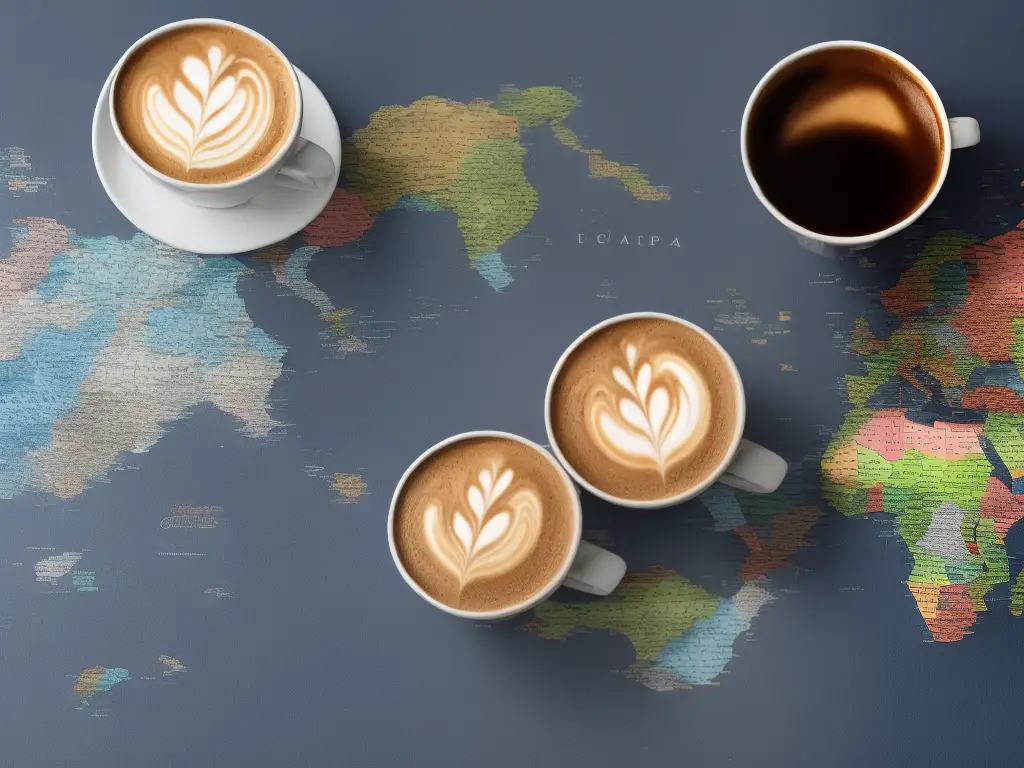
Sustainability and Environmental Impact
Starbucks European hot breakfast is not only highly regarded for its taste and variety, but also for the company’s strong commitment to sustainability and environmental impact. They ensure that their ingredients are responsibly sourced and their products are both high quality and ethically sound.
For instance, Starbucks sources 99% of its coffee ethically through its Coffee and Farmer Equity Practices (C.A.F.E). Moreover, they aspire to buy 100% cage-free eggs in Europe by the end of 2020, which showcases their dedication to animal welfare. Such commitments connect smoothly to Starbucks’ overall strategy to differentiate and strengthen its position in the European hot breakfast market.
Waste reduction is another vital area of focus for Starbucks, particularly concerning its hot breakfast items in Europe. The company has implemented various initiatives, such as offering discounts for customers bringing their reusable cups and partnering with charities to donate unsold food to those in need. These efforts have contributed to a reduction in waste and supported local communities simultaneously. Starbucks is also developing innovations in packaging materials, aiming to reduce the need for single-use plastics.
One of the ways Starbucks reduces its overall environmental impact is through energy and water conservation. The company constructs new stores using environmentally friendly designs, such as green roofs and energy-efficient lighting. Starbucks also participates in water conservation campaigns by educating its partners about water management best practices and installing water-saving equipment at its facilities. These initiatives contribute to conserving resources and decreasing the environmental footprint of Starbucks’ European hot breakfast.
The transport and distribution of Starbucks’ hot breakfast products in Europe also have implications for environmental impact. To mitigate this, Starbucks seeks to optimize its supply chain to reduce transportation distances and resource use. This includes working closely with their suppliers and adopting more sustainable distribution methods, such as utilizing fuel-efficient vehicles and optimizing delivery routes. These efforts not only result in cost savings but also contribute to reducing Starbucks’ carbon footprint.
In summary, Starbucks European hot breakfast is more than just a delicious and satisfying meal choice. The company places a strong emphasis on sustainability and minimising their environmental impact throughout the entire production, packaging, and consumption process. Through responsible sourcing of ingredients, waste reduction, improvements in energy and water conservation, and supply chain optimisation, Starbucks ensures that their mouth-watering hot breakfast items can be enjoyed without compromising the well-being of our planet.

Future Developments and Trends
Health and Sustainability
One noteworthy trend to consider for the future of Starbucks’ European hot breakfast selection is the increasing demand for healthier and more eco-friendly food options. Many consumers are becoming more health-conscious and environmentally aware, leading to a rise in the popularity of plant-based and locally sourced foods. Starbucks can capitalise on this trend by introducing more plant-based offerings, such as vegan breakfast sandwiches, and using ingredients from local suppliers to reduce their carbon footprint. This will cater to a growing market segment while showcasing the company’s dedication to sustainability and responsible sourcing.
Advancements in Technology
As food automation and artificial intelligence (AI) systems become more sophisticated, they will enable Starbucks to offer a more personalized, efficient, and seamless customer experience. For example, AI-powered ordering systems can recommend tailored breakfast options based on customers’ dietary preferences, lifestyle choices, or previous orders. This will not only improve customer satisfaction but also help Starbucks stay competitive in a market being disrupted by digital technology.
Innovative and Unique Menu Options
Offering innovative and unique menu options can help Starbucks stand out from the competition and capture the attention of adventurous food lovers. Incorporating global flavors and ingredients into their European hot breakfast offerings could create exciting fusion breakfast dishes that cater to a wider audience. Drawing inspiration from Middle Eastern, Asian, or African cuisines could be one way to achieve this.
Food Customization and ‘Build-Your-Own’ Concepts
Giving customers the ability to customize their breakfast dishes can enhance customer satisfaction and differentiate Starbucks from other quick-service breakfast providers. This personalized approach can cater to specific dietary needs or preferences and give customers more control over their meals.
Minimizing Food Waste
Starbucks is expected to focus on minimizing waste through efficient inventory management and food preparation techniques. The use of predictive analytics and dynamic menu pricing may help in optimizing the supply and demand for their hot breakfast options, reducing the likelihood of food waste. These efforts will contribute to a sustainable and environmentally friendly operation and a positive impact on the company’s brand image and customer loyalty.
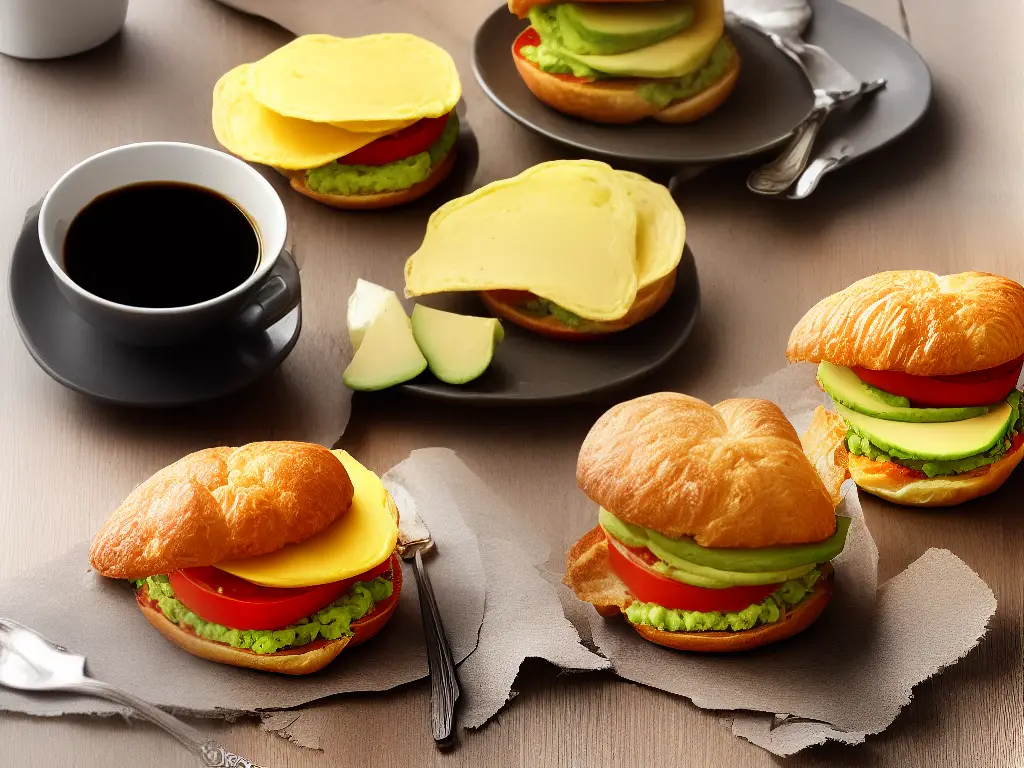
Throughout its European expansion, Starbucks has showcased an acute awareness of local tastes and preferences, whilst consistently evolving to provide a tailored experience for its patrons. By taking a holistic approach to understanding European culture, Starbucks has managed to create a distinguished niche for itself in the European market. This is evident in the way it designs its stores, curates its menu, and adopts sustainable practices. As new trends and technologies continuously emerge, Starbucks is presented with numerous opportunities for growth and development. Recognising and seizing these opportunities will determine how this coffee giant will leave a lasting impression on the European palate and the future of the hot breakfast experience.